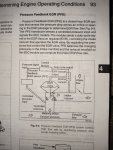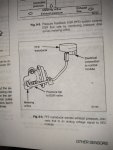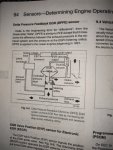DPDISXR4Ti
Well-Known Member
This topic came up in a different thread, but it's worthy of it's own discussion, in it's own thread. It's interesting that the early 4.0 implementations, both the Ranger and Explorer (and I presume Aerostar as well), did not have EGR at all. Certainly the technology existed and was put into production on other platforms in the early 80's. I can only assume that the initial 4.0 calibrations were clean enough to pass the EPA guidelines without EGR, so Ford opted to keep things simple and left it off.
Starting in 1993 (possibly earlier for CA vehicles?), EGR got phased in, first on the Explorer and then in 1994 on the Ranger. I'm still trying to figure this out, but it would seem that it's implementation was a little more complex than the earlier 80's EGR implementations. Sequential Fuel Injection (SEFI) arrived on the scene at the same time as EGR, and SEFI required a Cam Position Sensor. From what I've observed, you got all (EGR, SEFI, Cam Sensor) or none on the 4.0. Does one require the other? I don't believe so, but I'm willing to be convinced otherwise.
Part of why I'm raising this topic is to determine the cross-compatibility of early EEC-IV 4.0 PCM's with later ones. Certainly they are NOT plug-n-play compatible, as the wiring did change. But let's say you wanted to convert your 1991 Ranger 4.0 from EFI to SEFI. Could that be done by simply moving a couple wires, adding the additional circuits for each of the fuel injectors and swapping out the "dumb" oil pump drive with a later one that has the Cam Sensor?
Starting in 1993 (possibly earlier for CA vehicles?), EGR got phased in, first on the Explorer and then in 1994 on the Ranger. I'm still trying to figure this out, but it would seem that it's implementation was a little more complex than the earlier 80's EGR implementations. Sequential Fuel Injection (SEFI) arrived on the scene at the same time as EGR, and SEFI required a Cam Position Sensor. From what I've observed, you got all (EGR, SEFI, Cam Sensor) or none on the 4.0. Does one require the other? I don't believe so, but I'm willing to be convinced otherwise.
Part of why I'm raising this topic is to determine the cross-compatibility of early EEC-IV 4.0 PCM's with later ones. Certainly they are NOT plug-n-play compatible, as the wiring did change. But let's say you wanted to convert your 1991 Ranger 4.0 from EFI to SEFI. Could that be done by simply moving a couple wires, adding the additional circuits for each of the fuel injectors and swapping out the "dumb" oil pump drive with a later one that has the Cam Sensor?
Last edited:















